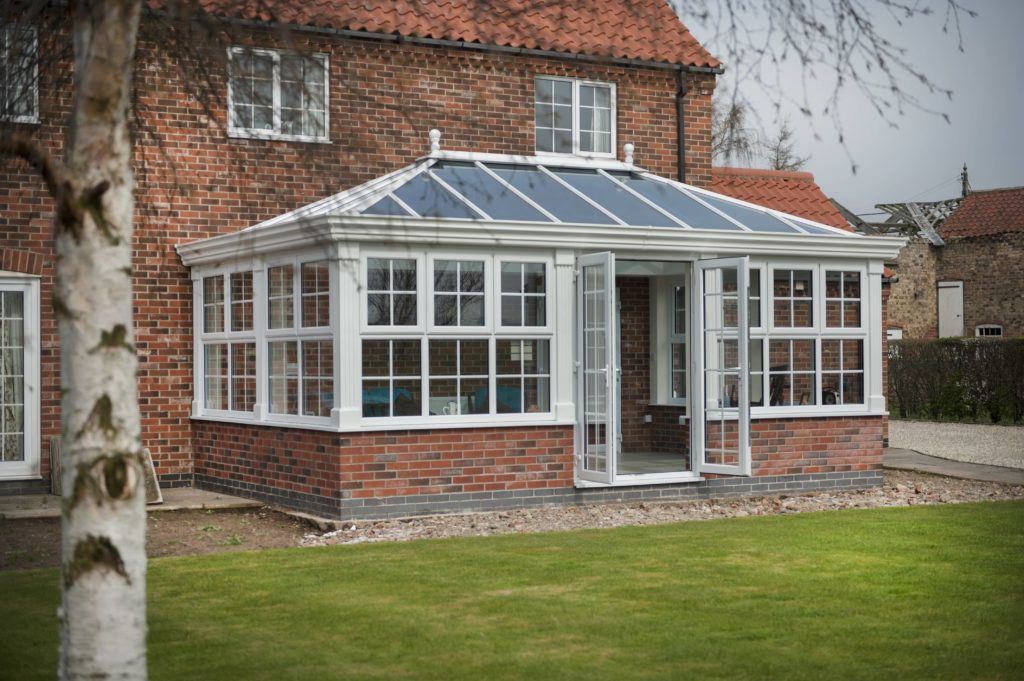Here, we’re going to look at the rules and regulations for planning permissions, as well as the benefits of adding an orangery to your home.
In this guide, we cover:
Do you need planning permission for an orangery?
Orangery planning permission guidelines
When do you need planning permission for an orangery?
How much does it cost to get planning permission in the UK?
Does an orangery need building regulations?
Do you need planning permission for an orangery?
You’re unlikely to need planning permission for an orangery, but you should always check with your local planning department.
Orangery planning permission guidelines
Orangeries are typically exempt from planning permission, as they are considered ‘permitted developments’.
However, they are not allowed to:
- cover more than 50% of the size of the house
- be taller than four metres
- be more than half the width of the house
- have elevated platforms or balconies
- have eaves taller than three metres if it is within two metres of a boundary





At ConservatoryLand, we’ll let you know if the orangery you’re purchasing will not meet these criteria.
If you fail to adhere to these guidelines, you will need planning permission.
Check the planning permissions page for the UK for more details, or speak to one of our experts.

When do you need planning permission for an orangery?
There are some other factors you need to check before proceeding with the build of an orangery.
If any of these apply, you may need planning permission:
- Original house: The location of your orangery will depend on whether and when any extensions or additions have been made to the house after 1st July 1948 (or when it was built).
- Listed buildings: Listed buildings have restrictions on the types of building work that can be done on them. A listed building authority must approve an orangery installation. This also applies to designated land, such as conservation areas, national parks, areas of outstanding beauty and world heritage sites.
- Restrictive covenant: If you have a covenant, building an orangery might not be possible, and it would be best to seek legal counsel. In certain circumstances, covenants may not be upheld, so consulting a good lawyer can help you get the covenant lifted.
How much does it cost to get planning permission in the UK?
Application fees vary in England and Wales, so you should check with your local authority.
Typically, you’ll receive an answer within eight weeks of submitting your application. In some cases, it could take up to 13 weeks.
Find out more information about applying for planning permission on the GOV.UK website.
Does an orangery need building regulations?
Unlike conservatories, which are usually considered separate structures, an orangery does need building regulation approval. This is because orangeries are mostly open plan designs and require more brickwork.
Building regulations are separate to planning permissions, and you need to make sure you get approval from both authorities.
Build an orangery with ConservatoryLand
While an orangery isn’t that much different from a conservatory, there are a few added benefits.
For one thing, it is easier to blend in with the rest of your property. The brick walls can match those on your home, and make it look like a more natural extension.
It’s also a great way to control temperature. Less glass means there is less exposure to the sun, which also presents the opportunity for cavity insulation.
Overall, many people choose an orangery because it feels like just another room in the home. While a conservatory is a self-contained extension, an orangery can seamlessly integrate with a kitchen or living area.
If you have any questions about our orangeries, don’t hesitate to contact us here at ConservatoryLand.
Planning permission rules can vary and change over time, therefore the information shown on this page should not be completely relied upon, but is intended as a guide only. If in doubt, always check out the latest rules and procedures by contacting the relevant local authorities.




